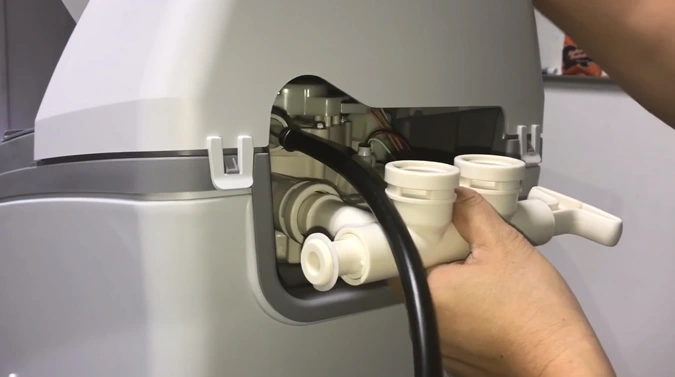Last Updated on May 16, 2023
If you have a water softening system installed in your home, you know how important it is to have clean, soft water flowing through your pipes. But what happens when you need to bypass the water-softening process temporarily?
Enter the bypass valve. This crucial component of any water softening system provides you with the ability to bypass the system when needed, like when the salt supply is low or system maintenance is required. You may also need it for various purposes, such as watering your plants or washing your car.
Understanding what a water softener bypass valve is, how it works, and its primary purpose can help you maintain and optimize your water softening system.
So, let’s delve into this essential component and learn how it can help you enjoy clean, soft water in your home.
What Does A Water Softener Bypass Valve Do: An Overview
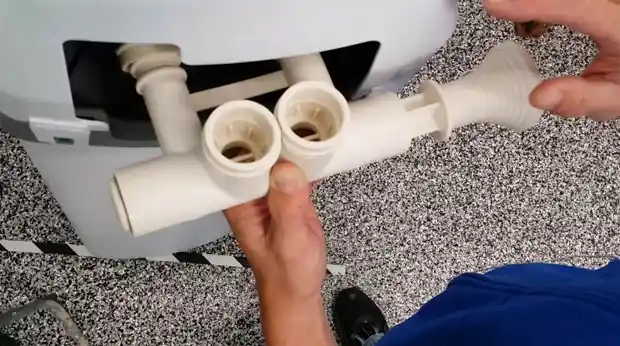
The bypass valve of a water softener is an essential component of any water softening system. Its purpose is to allow the homeowner to temporarily bypass the water-softening process when necessary. For example, if there is a problem with the water softener salt supply or the system needs to be cleaned, bypass valves can bypass the softened water and use hard water instead.
Homeowners living in areas with hard water often find their plumbing clogged with mineral deposits. To protect your plumbing and keep your water bill lower, you may choose to install a water softener. A water softener exchanges the minerals in hard water for sodium ions. An ion exchange process is used in this process.
While sodium ions are not as damaging to your plumbing, they can still build up over time. To prevent this from happening, most water softeners have a bypass valve. The bypass valve allows you to divert some of the hard water around the ion exchange process. This ensures that the minerals do not have a chance to build up and damage your pipes.
The amount of hard water bypassed can be adjusted to meet your needs. If your pipes start to become clogged, you can simply adjust the bypass valve to allow more hard water through the system. This will help to flush out the mineral deposits and keep your plumbing working properly.
If you want to use hard water for lawns and gardens or if you need to service your water softener, this is especially useful. The extra minerals and pH in hard water can be beneficial for plants when watering your lawn. The bypass valve is also useful when you need hard water for other purposes, such as washing your car or filling a swimming pool.
Where Should the Water Softener Bypass Valve be Placed?
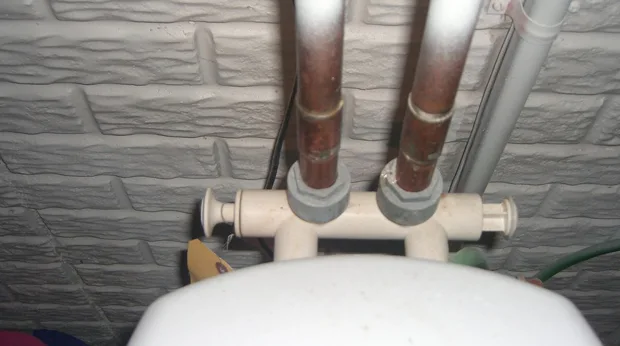
The position of your water softener bypass valve is important for the proper function of your unit. The bypass valve should be located near the water pipes that are connected to your softener. This will ensure that the water flowing through the pipes is properly softened.
There are different types of bypass valves available, so you’ll need to choose the one that is best suited for your needs. Each type of valve can be placed in a different location, so check and read the manufacturer’s instructions carefully.
Here are the most common types of water softener bypass valves:
Lever Bypass Valve
The bypass valve on your water softener is located between the inlet and outlet valves on the main pipe. The valve looks like a lever, and on it, you’ll see either ‘bypass’ or ‘service’ along with an indicator that shows you what setting it’s at. If you want to stop the water softening process, simply turn the valve to ‘bypass.’
This will stop sending water to the water softener once the inlet and outlet valves are closed. Once you’re ready to start the process again, just turn the lever back to its original position and return the valve to the ‘service’ position. Water will start flowing through the softener after opening the inlet and outlet valves.
A Handle Bypass Valve
The bypass valve is located on the side of the unit and has a handle that can be turned to the ‘bypass’ position. This allows water to bypass the softener, which can be helpful if you need to use hard water for any reason. To turn the bypass valve, simply turn the handle clockwise or in the direction indicated by the arrow.
You may need to use some force to turn the handle, but this is normal. If you have trouble turning the handle, you can try turning on the water full blast in your tub or shower, which will help relieve pressure and make it easier to turn. Remember to turn off the bypass valve when you’re finished using hard water so that your softener can continue to soften your water.
Push-type Bypass Valve
A push-type bypass valve is located near the connection of your water pipes and your water softener. There is a push-knob on the valve with a label that says ‘bypass’ or on/off. To bypass your water softener, simply push the knob in until it can’t be pushed any further.
To stop bypassing, either pull the knob out or push it back in. Note that pushing the knob all the way in will turn your water softener off, so be sure only to bypass it when needed.
Also, if you have a commercial unit, the water pipes may be connected to three separate valves. In this case, it is even more important that the bypass valve is properly positioned, as a mispositioned valve could cause one of the valves to become clogged or damaged.
Is It Okay to Buy a Water Softener Bypass Valve Online?
Purchasing a water softener bypass valve online can be convenient and cost-effective. Still, it’s essential to research and find the right valve for your specific water softener model. The wrong valve can cause compatibility issues, size discrepancies, or reduced durability and functionality.
It’s also wise to compare prices between different retailers and manufacturers, as well as read customer reviews to ensure a quality product. Ensure the valve is compatible with your local water supply or connections before purchasing.
You can read our review of the best water softener valves to help you find the right model for your needs. Our reviews are based on features such as durability, compatibility, and ease of installation.
How to Turn Off a Water Softener’s Bypass Valve?
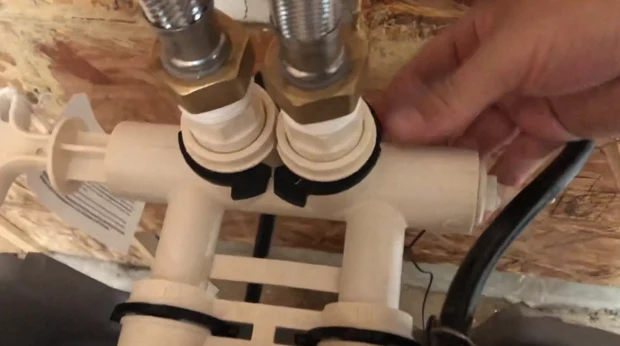
Anytime you need to shut down your water softener, you should first open the bypass valve. This will allow you to continue to have access to hard water without having to worry about the softener getting in the way. The process is actually quite simple: first, locate the bypass valve (it should be fairly easy to spot, as it’s usually larger than the other valves on the unit).
Then, turn the valve a quarter turn in either direction. Once all three valves are in the correct position, you can then proceed to shut down the unit. Keep in mind that when you’re ready to start using your water softener again, you’ll need to reverse this process.
What’s the Longest Period You Can Let a Water Softener Sit?
Depending on the model of the water softener, the maximum amount of time it can go without use before a regeneration cycle is needed varies. If you have a water softener that you haven’t used in a while, it’s important to take the proper steps to ensure that it will work properly when needed.
For softeners that haven’t been used in more than 7-8 days, you’ll need to initiate a regeneration cycle manually to properly soften the water and charge the ion exchange resin. Be sure to open your bypass control valve before starting the regeneration process if your unit has one.
If your softener has been sitting unused for more than 30 days or longer, you should clean out the entire brine tank with a chlorine solution to prevent common problems such as salt bridges and salt mushing. This will ensure that your water softener is ready to go when you need water treatment.
Is It Ok to Bypass the Water Softener When Filling a Hot Tub?
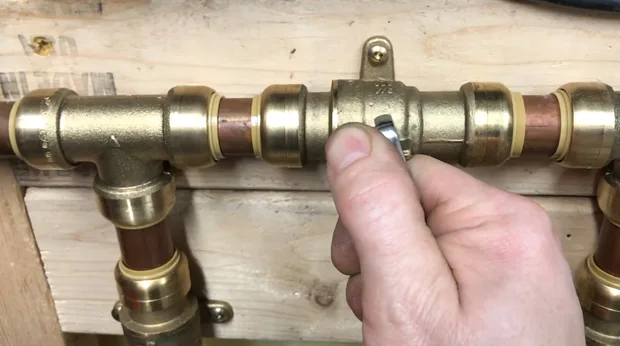
While it’s technically possible to bypass your softener while filling a hot tub, it’s not recommended. While soft water can help to improve the feel of your skin and hair, it can also cause problems with your hot tub. Aside from that, soft water can reduce the efficiency of your hot tub’s filtration system and heating elements.
For these reasons, it is always best to use only hard water when filling your hot tub. If you live in an area with very hard water, you may need to add a small amount of soft water to reach the desired hardness level. In any case, this should not exceed 20-25%, as adding too much soft water can still cause problems for your hot tub.
Ultimately, using the correct type of water is essential for keeping your hot tub in pristine condition.
In a typical scenario, the water softener bypass valve should remain in a closed position to ensure that water flows through the water softener, which maintains and improves its quality.
The valve is designed to divert water around the softener in the event of maintenance or repairs, or if you wish to temporarily suspend the water softening process. To accomplish this, simply open the bypass valve and shut off the inlet and outlet pipes.
With the bypass valve left open, water will effectively circumvent the softener without being treated until the valve is closed once again. Therefore, it is critical to maintain the water softener bypass valve in a closed position during regular operation to ensure maximum efficiency and performance.
Streamline Your Water Supply With Essential Bypass Valves
Don’t underestimate the importance of a water softener bypass valve in your system just because it’s not the flashy MVP. It’s crucial for quick and easy access to clean water when you need it, whether you’re dealing with maintenance or any other tasks. So don’t overlook this little beast.
Now that you know what a water softener bypass valve does, you can take charge of your water softening system. But if you’re ever unsure or need a helping hand, don’t hesitate to reach out to the experts to ensure your softener works like a charm.

